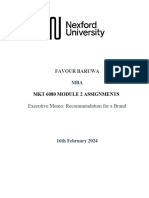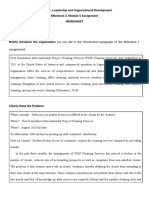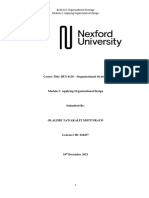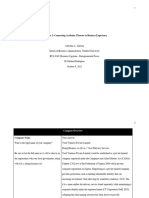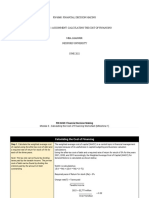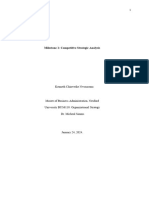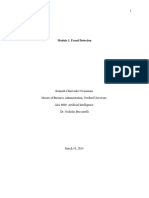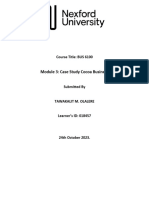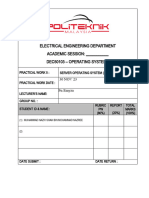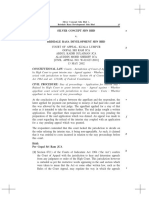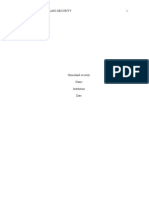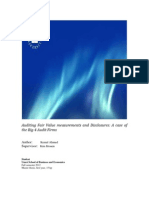100% found this document useful (1 vote)
567 views7 pagesBUS 6110 Module 2 Assignment
The document discusses Google's organizational structure and recommends changes using the Star Model in response to a new technology advancement. Google has a product-based and function-based structure that is flat, prioritizing innovation. The Star Model involves strategy, structure, processes, rewards, and people. It recommends forming cross-functional teams and a specialized task force to integrate the new technology, customized agile processes, and training programs to improve staff proficiency.
Uploaded by
Ebelechukwu NwinyiCopyright
© © All Rights Reserved
We take content rights seriously. If you suspect this is your content, claim it here.
Available Formats
Download as DOCX, PDF, TXT or read online on Scribd
100% found this document useful (1 vote)
567 views7 pagesBUS 6110 Module 2 Assignment
The document discusses Google's organizational structure and recommends changes using the Star Model in response to a new technology advancement. Google has a product-based and function-based structure that is flat, prioritizing innovation. The Star Model involves strategy, structure, processes, rewards, and people. It recommends forming cross-functional teams and a specialized task force to integrate the new technology, customized agile processes, and training programs to improve staff proficiency.
Uploaded by
Ebelechukwu NwinyiCopyright
© © All Rights Reserved
We take content rights seriously. If you suspect this is your content, claim it here.
Available Formats
Download as DOCX, PDF, TXT or read online on Scribd
/ 7



